Wintersemester 2016/2017, BA/MA Textil- und Material-Design Textil_Startseite
SteinWeich
Projekt / Project: SteinWeich, 2017
Betreuung / Supervison: Prof. Christiane Sauer, Agata Kycia
Projektteam Studierende:
Charlotte Ackermann, Rute Chaves, Lena Ganswindt,
Benjamin Gladki, Minyoung Han, Olga Kuschchyk,
Liina Leo, Malu Lücking, Friederike Müller, Boram Park,
Jack Randol, Idalena Rapp, Katharina Filist,
Rebecca Schedler, Natascha Unger, Abigail Wheeler
Kooperationspartner / Cooperation Partner:
DBF Deutsch Basalt Faser GmbH
Sächsisches Textilforschungsinstitut (STFI) e.V.
Alterfil Nähfaden GmbH
DE
Basalt ist im architektonischen Kontext vor allem als Plattenbelag verbreitet. Schmilzt man das vulkanische Gestein bei ca. 1.400 °C, lassen sich aber auch Filamente, also Endlosfasern, aus dem Material herstellen. Diese werden zu Rovings, Garnen oder Geweben weiterverarbeitet und für technische Anwendungen wie z. B. als Verstärkung in Kompositmaterialien genutzt. Als natürliche Ressource bieten Basaltfasern viele Vorteile. Die Vorkommen sind riesig, denn der größte Teil der Erdkruste besteht aus Basaltgestein und sie können voll recycelt werden. Die Zugund
Druckfestigkeit von Basaltfasern ist höher als die von Glasfasern. Gute mechanische, thermische Eigenschaften und UV-Beständigkeit machen das Material für viele Anwendungen attraktiv, dennoch hat es sich auf breiter Basis noch nicht durchsetzen können und ist relativ unbekannt.
In dem Entwurfsprojekt „SteinWeich“ wurden experimentelle textile Basaltstrukturen und Oberflächen entwickelt und umgesetzt. Der Titel „SteinWeich“ referenziert die unterschiedlichen Aggregatzustände des Materials: zunächst flüssige Lava, dann erstarrt, tausende Jahre später wieder aufgeschmolzen und zu weichen Fasern bzw. textilen industriellen Geweben verarbeitet, die nun innerhalb des Projektes manipuliert, zum Teil wieder verhärtet oder mit anderen Materialien verbunden wurden.
EN
In the architectural context basalt is utilized mainly as a solid material for surfaces. The volcanic rock melts at around 1.400 °C, enabling production of continuous basalt fibers, so called filaments. Basalt filaments are further processed into rovings, yarns or fabrics and used for technical applications like reinforcements for composite materials. Basalt fibers derive from natural resources and have various advantages. Produced from the most widespread rock on our planet, they can be can be fully recycled. Their tensile and compression strength is higher than that of glass fibers. Basalt fibers offer many potential applications due to their good mechanical, thermal and UV resistance, but they are still relatively unknown to a wider public.
In the design project „SteinWeich“ students from „weißensee kunsthochschule berlin“ developed experimental textile basalt structures. The title of this project refers to the different aggregation states of the material: initially liquid lava, then solidified and thousands years later melted again and processed into soft fibers used for production of industrial fabrics.
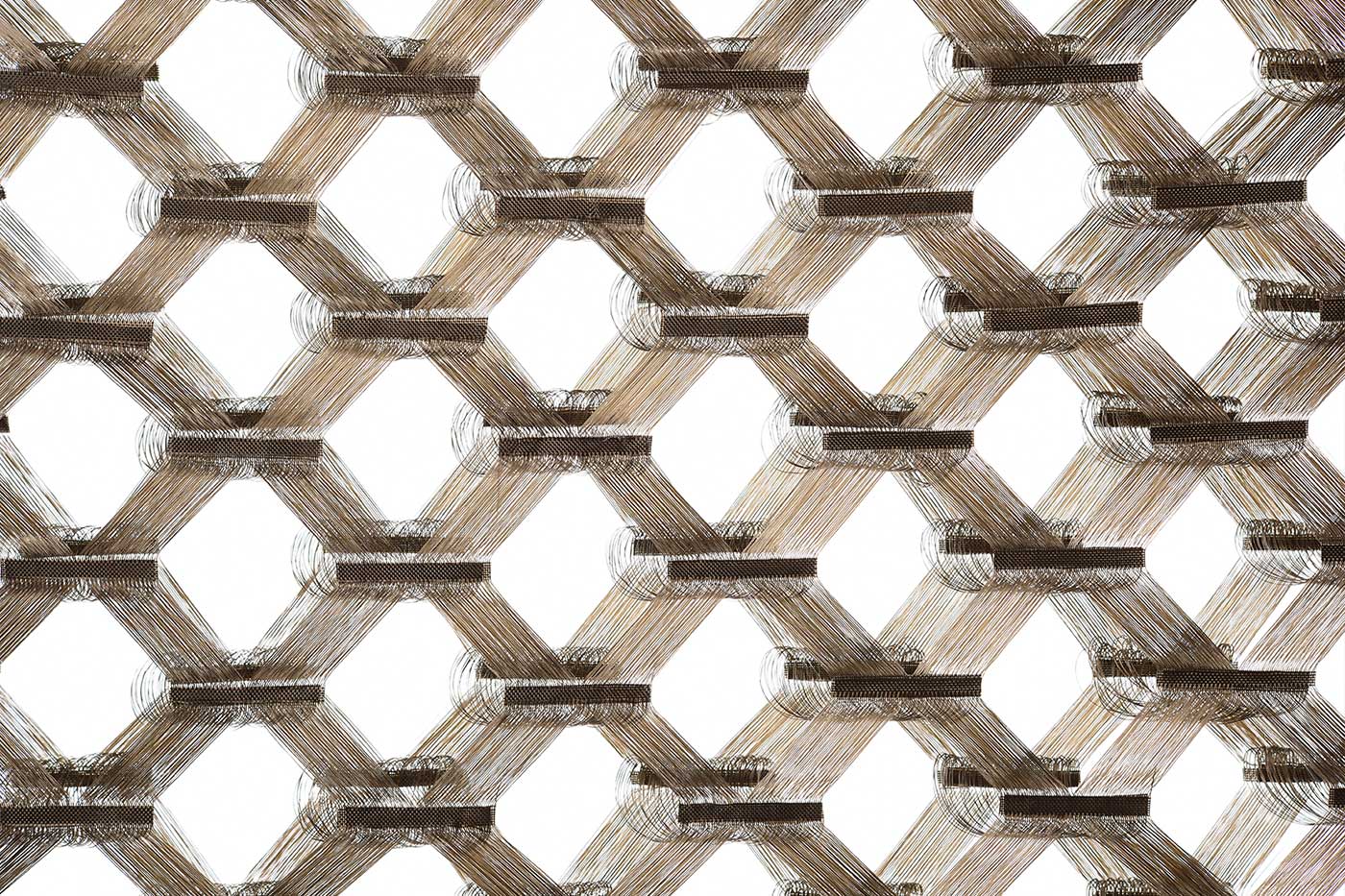
SteinWeich – Shifting Stone, 2017
Malu Lücking, Jack Randol, Rebecca Schedler
For „Shifting Stone“ industrial basalt fabrics were manipulated in order to achieve a particular open structured pattern, mobility and transparency. Layers of fabric are combined into three-dimensional textile structures that can open and close the surface by shifting the layers vertically. In an architectural context the textile can be used for shading large glass facades and adapt to meet changing requirements for visibility and sun protection.
Awards: 2. price „material innovation“, 14th International Student Competition
„Textile Structures for New Building“ 2017, Techtextil Fair, Frankfurt / Main
Exhibitions: Sonderschau Messe Textil „Textile strukturen für neues Bauen“, 05 / 2017
Alle Rechte vorbehalten Agata Kycia
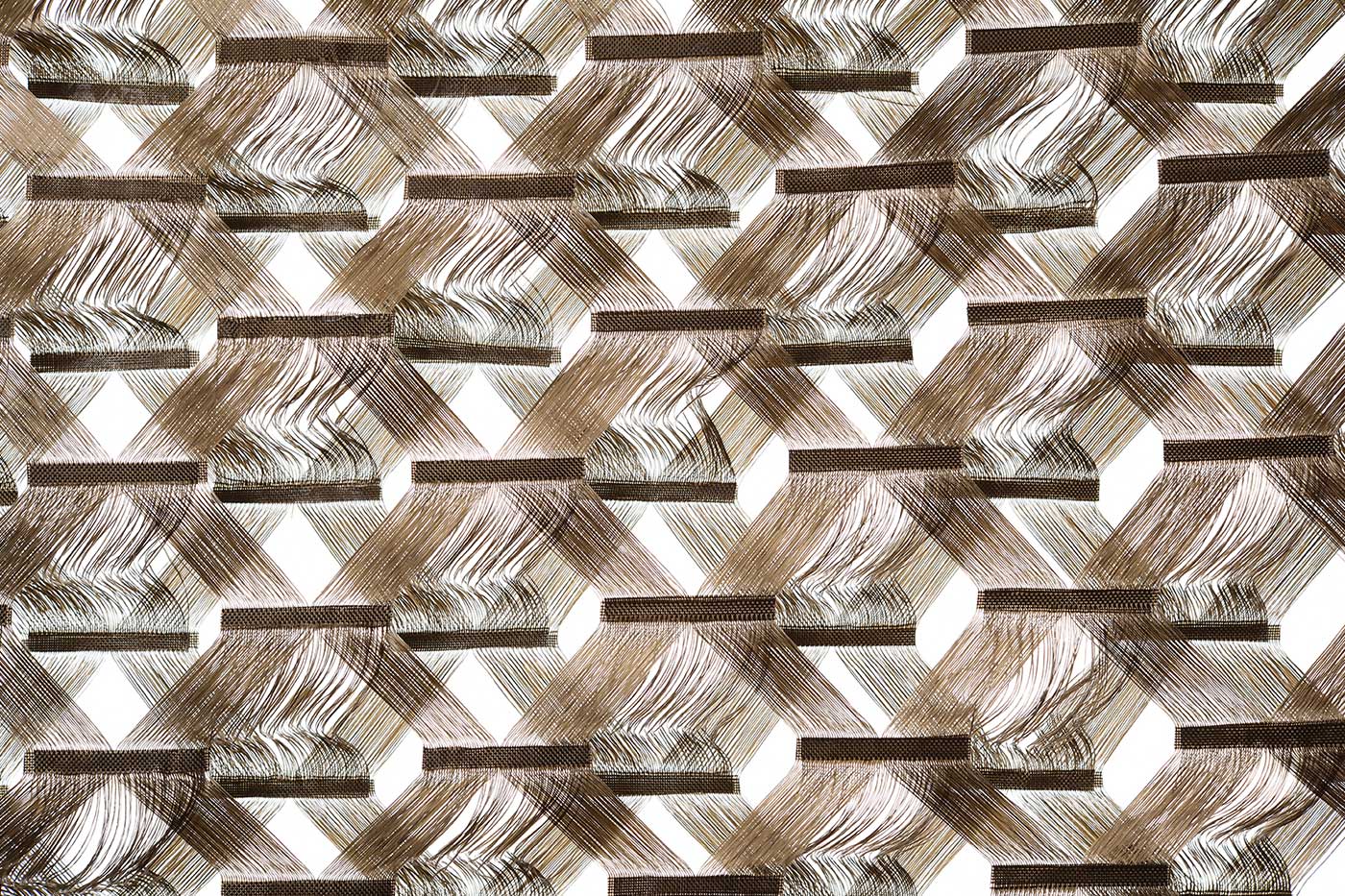
Alle Rechte vorbehalten Agata Kycia
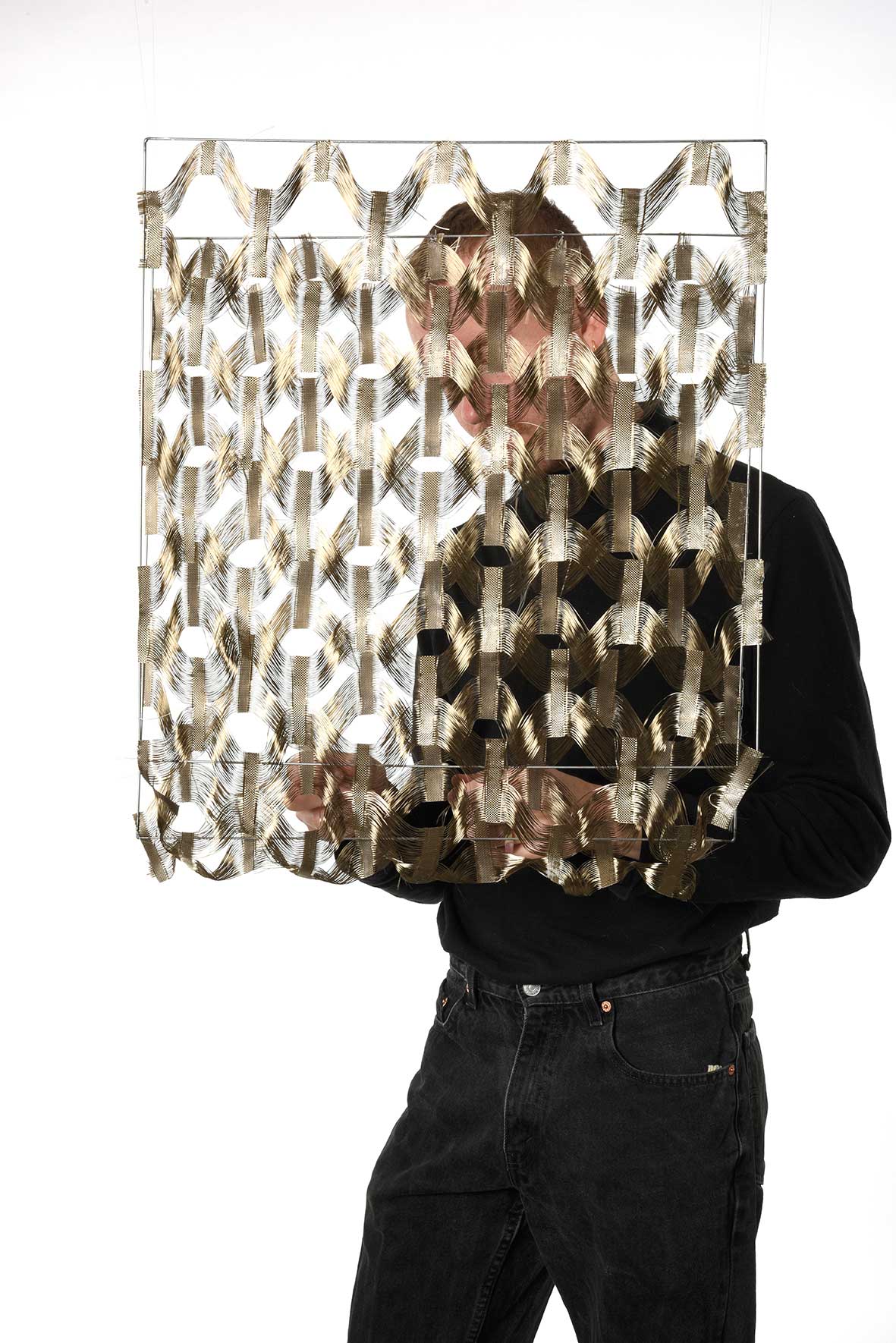
Alle Rechte vorbehalten Agata Kycia

SteinWeich – Stone Web, 2017, BA Graduation Project
Idalene Rapp, Natascha Unger
Stone Web is a system in which individual modules are combined to create spatial structures. The hexagonal modules are manufactured by resinated basalt filaments of various thickness and density that varies according to structural or visual needs. They can be stacked horizontally, vertically or diagonally, offering a wide range of possible spatial configurations. Stone is used as an ultra-light building material: one module weighs only 50 grams, a wall with 80 modules around 4 kilograms.
Awards: 1. price „material innovation“, 14th International Student Competition „Textile Structures for New Building“ 2017, Techtextil Fair, Frankfurt / Main
Exhibitions:
-Sonderschau Messe Textil „Textile strukturen für neues Bauen“, 05 / 2017
-Neue Stoffe – New Stuff. Gestalten mit Technischen Textilien, 23 / 08 / 2017 – 02 / 04 / 2018, Textilmuseum St. Gallen
-Zentrum für Leichtbau, STFI, Chemnitz, ab 05 / 2017
Alle Rechte vorbehalten Agata Kycia
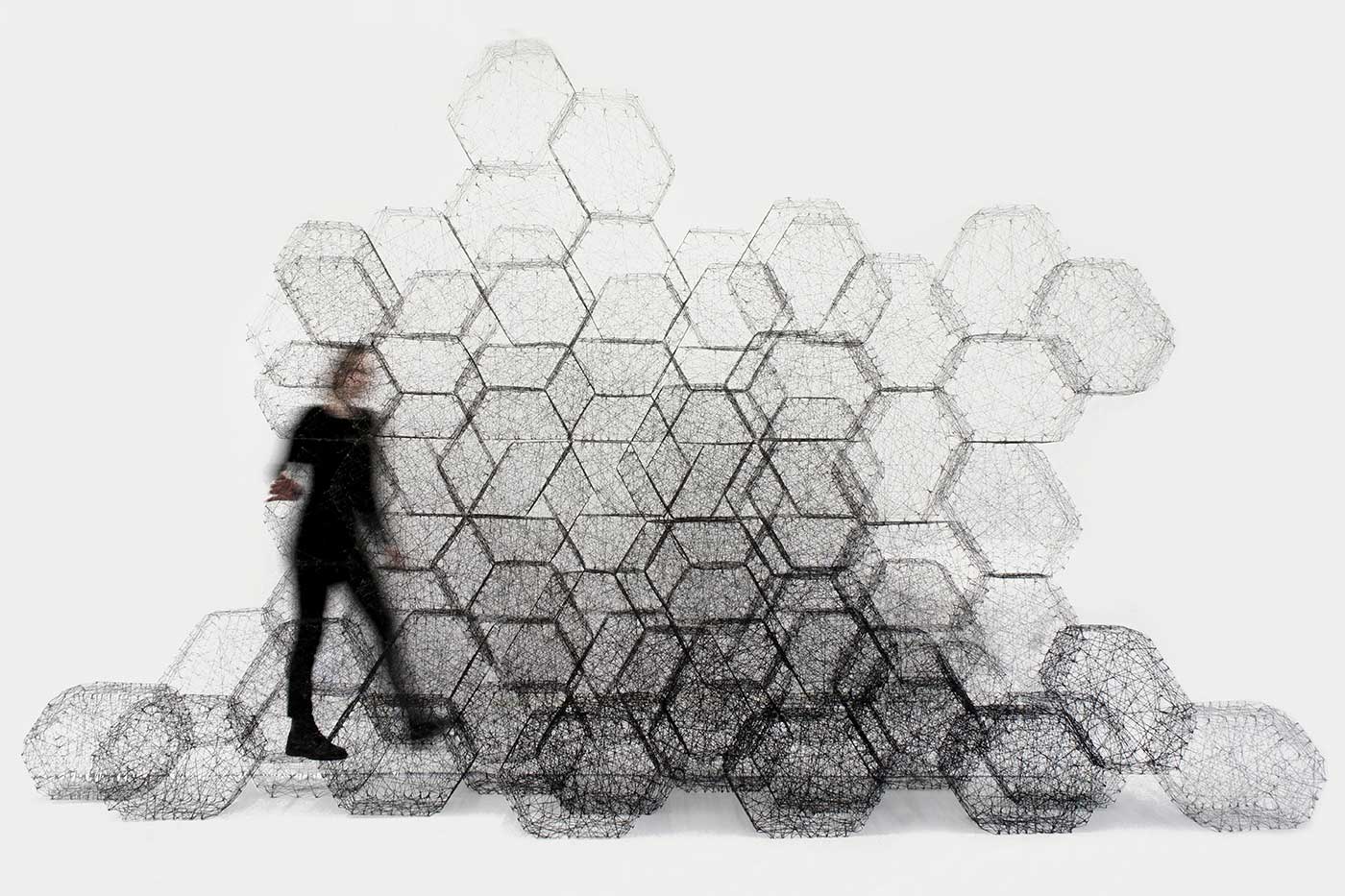
Alle Rechte vorbehalten Agata Kycia
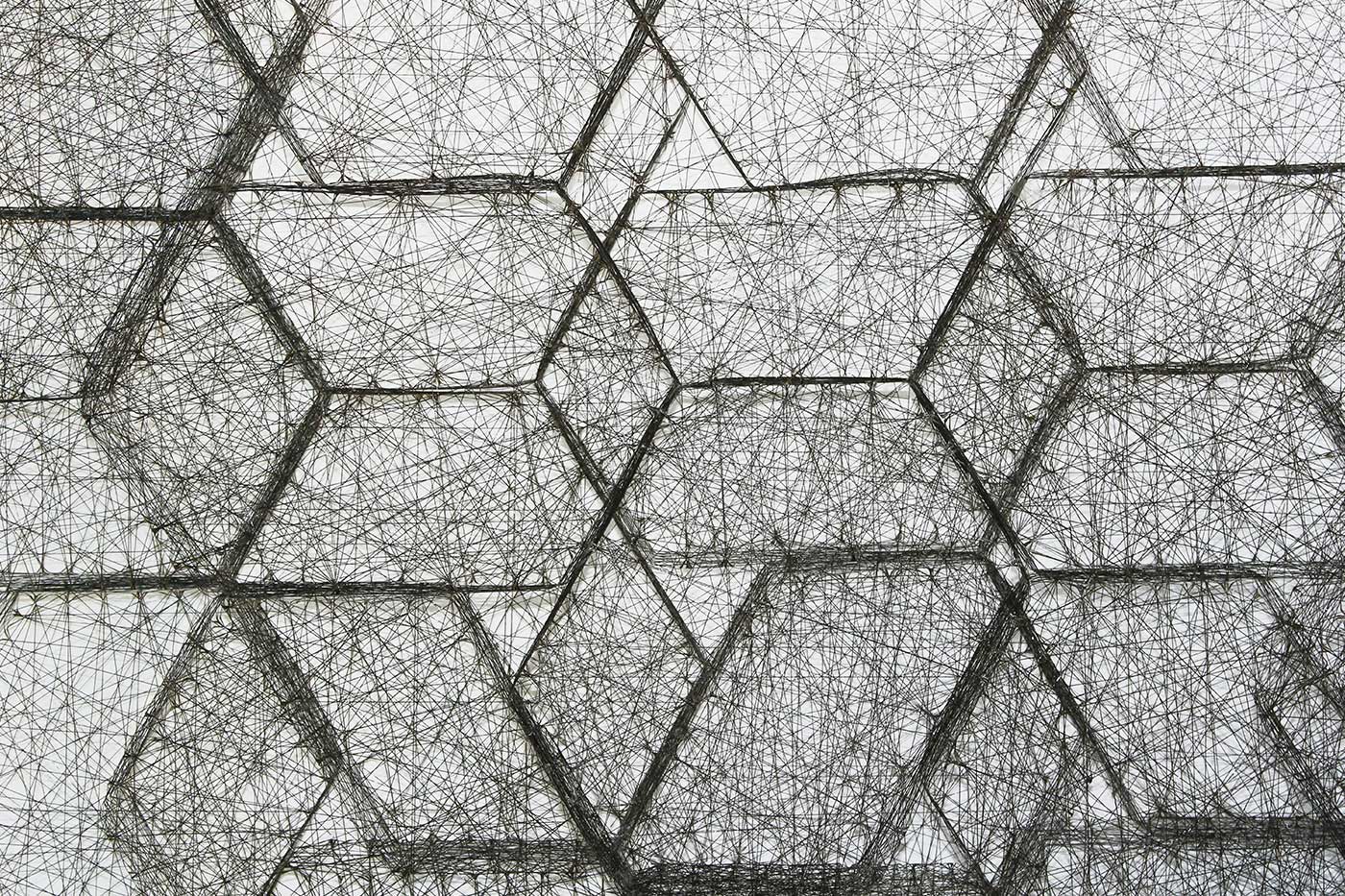
Alle Rechte vorbehalten Agata Kycia
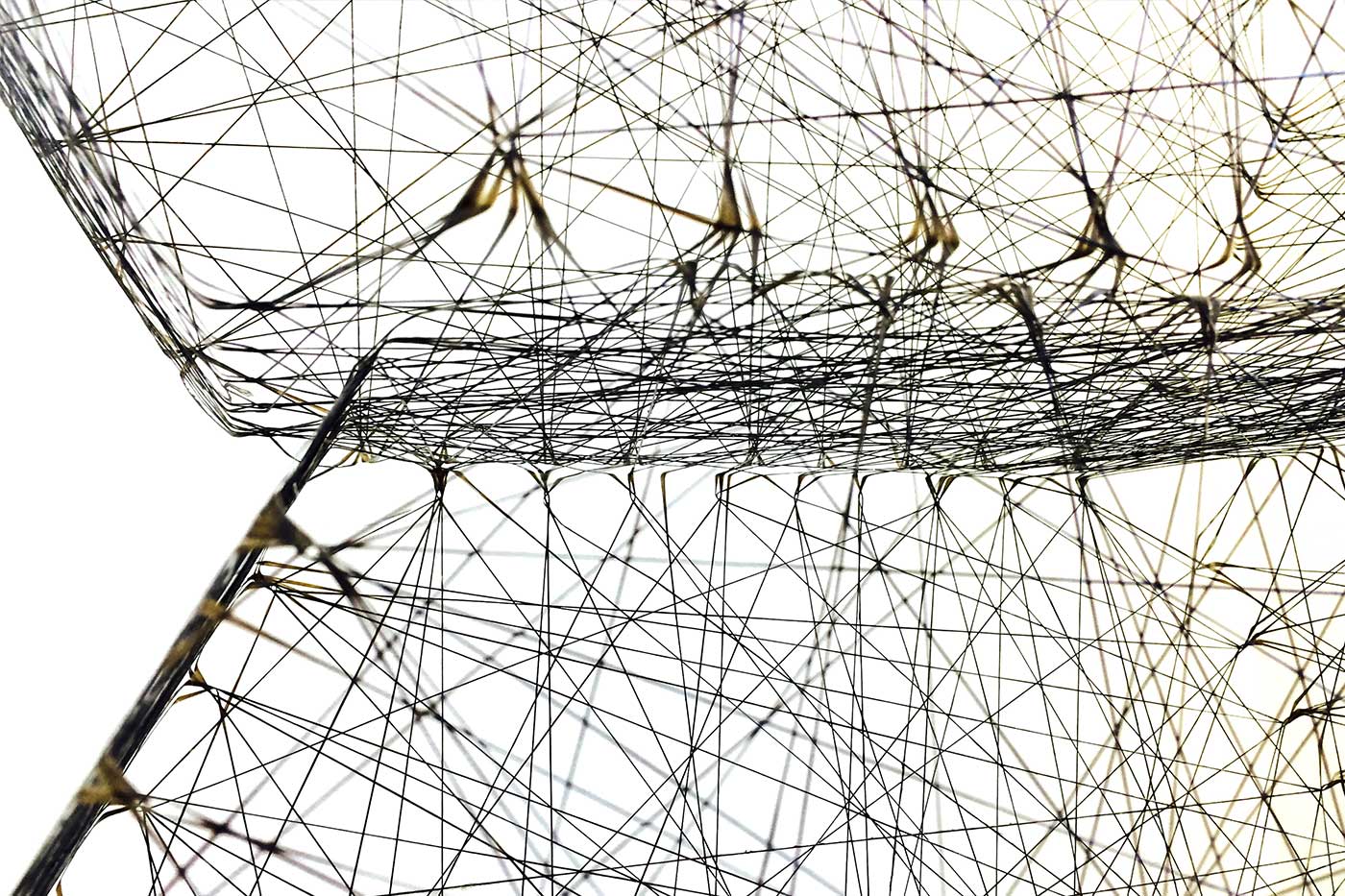
Alle Rechte vorbehalten Agata Kycia

Alle Rechte vorbehalten Agata Kycia

Alle Rechte vorbehalten Agata Kycia
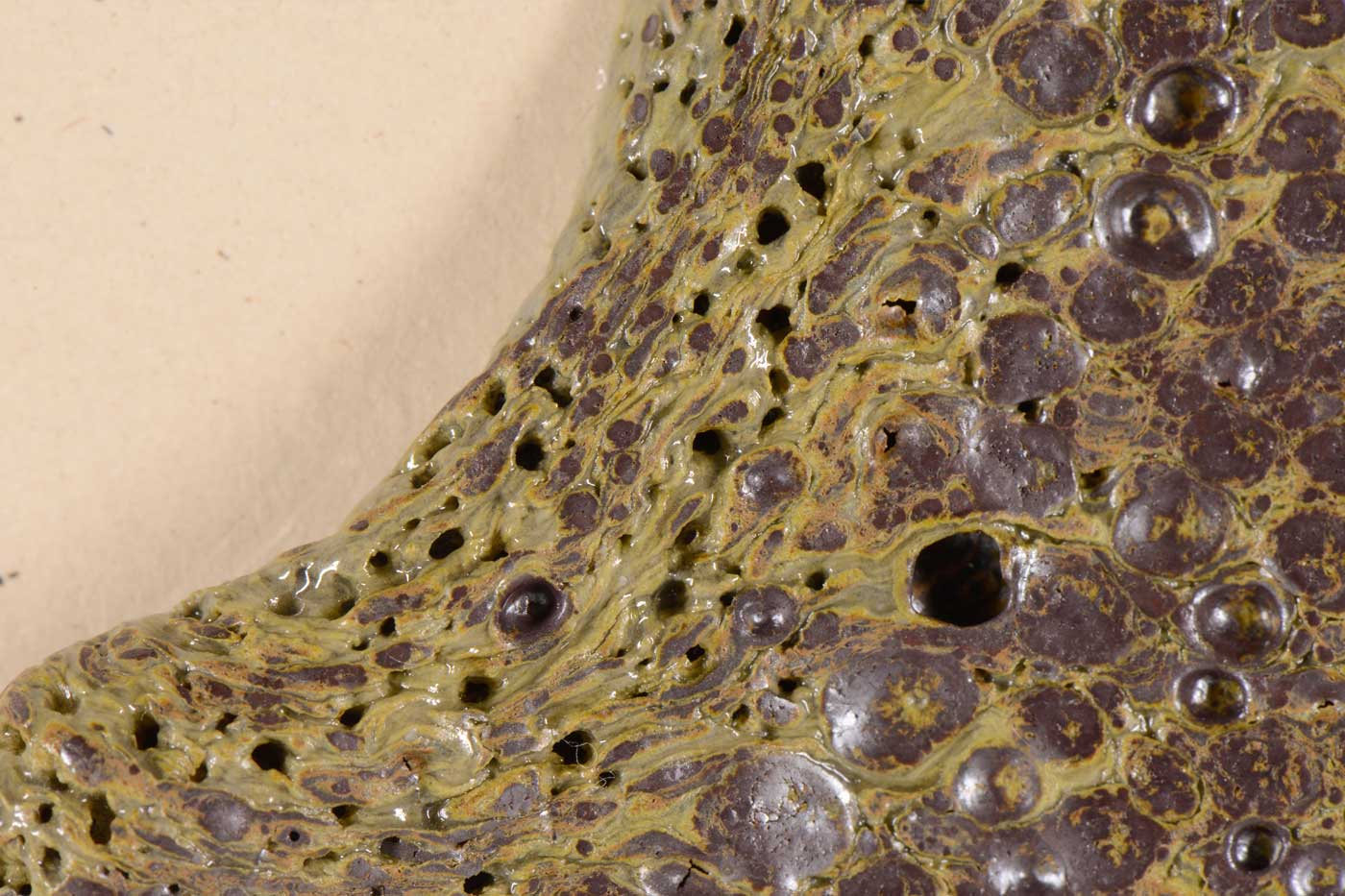
Alle Rechte vorbehalten Agata Kycia
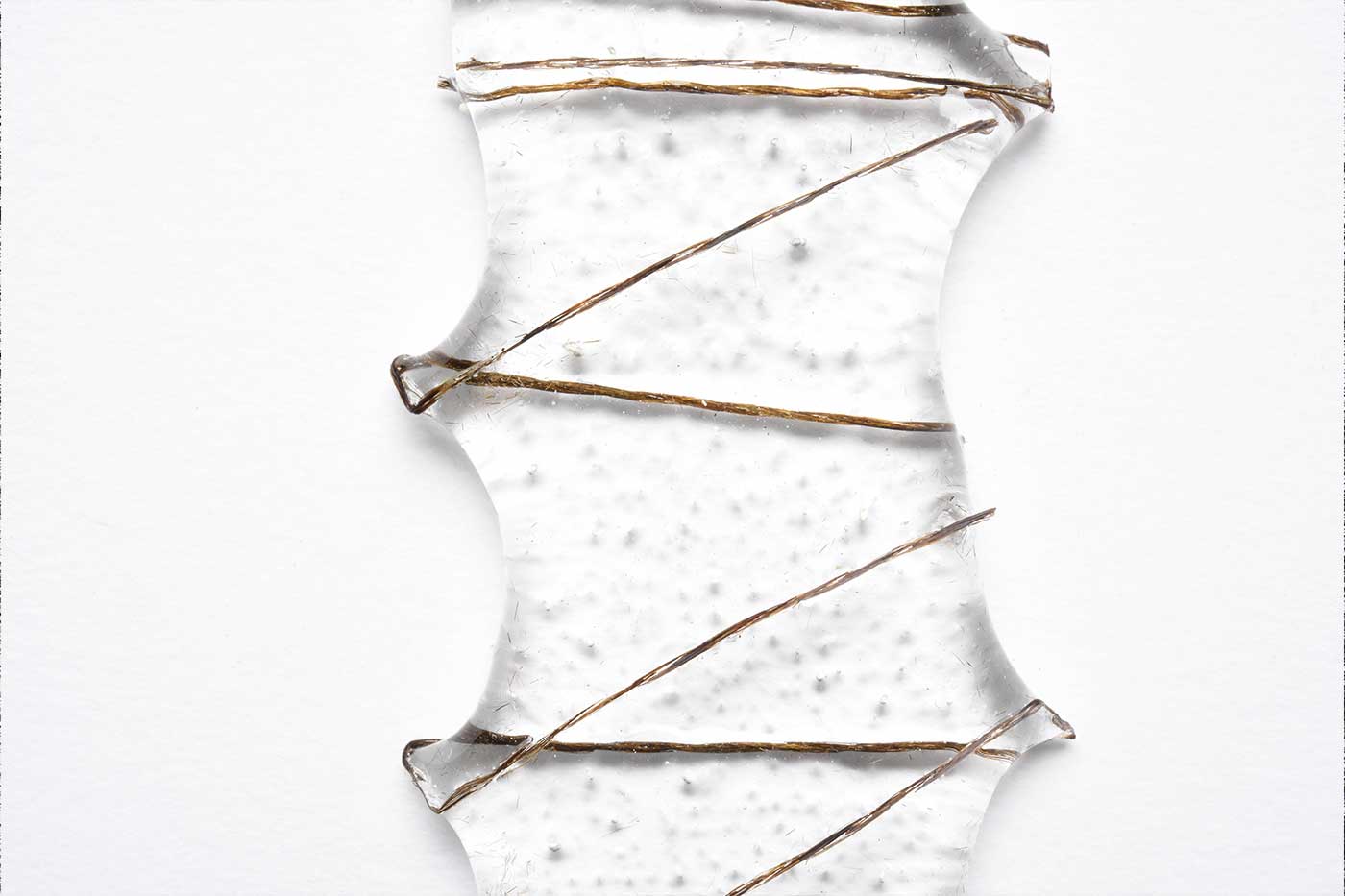
SteinWeich – Glas Poesie, 2017
Minyoung Han, Benjamin Gladki
The cycle of aggregate states between solid and liquid, the interplay of melting and solidification are the inspirational starting point of „Glass poetry“. The experiments took advantage of the heat resistance of basalt and glass. The composites were softened at 800 °C in the fusing oven, where the fibers became form defining or surface structuring elements.
Exhibition: Zentrum für Leichtbau, STFI, Chemnitz, ab 05 / 2017
Alle Rechte vorbehalten Agata Kycia

Alle Rechte vorbehalten Agata Kycia

Alle Rechte vorbehalten Agata Kycia

Alle Rechte vorbehalten Agata Kycia
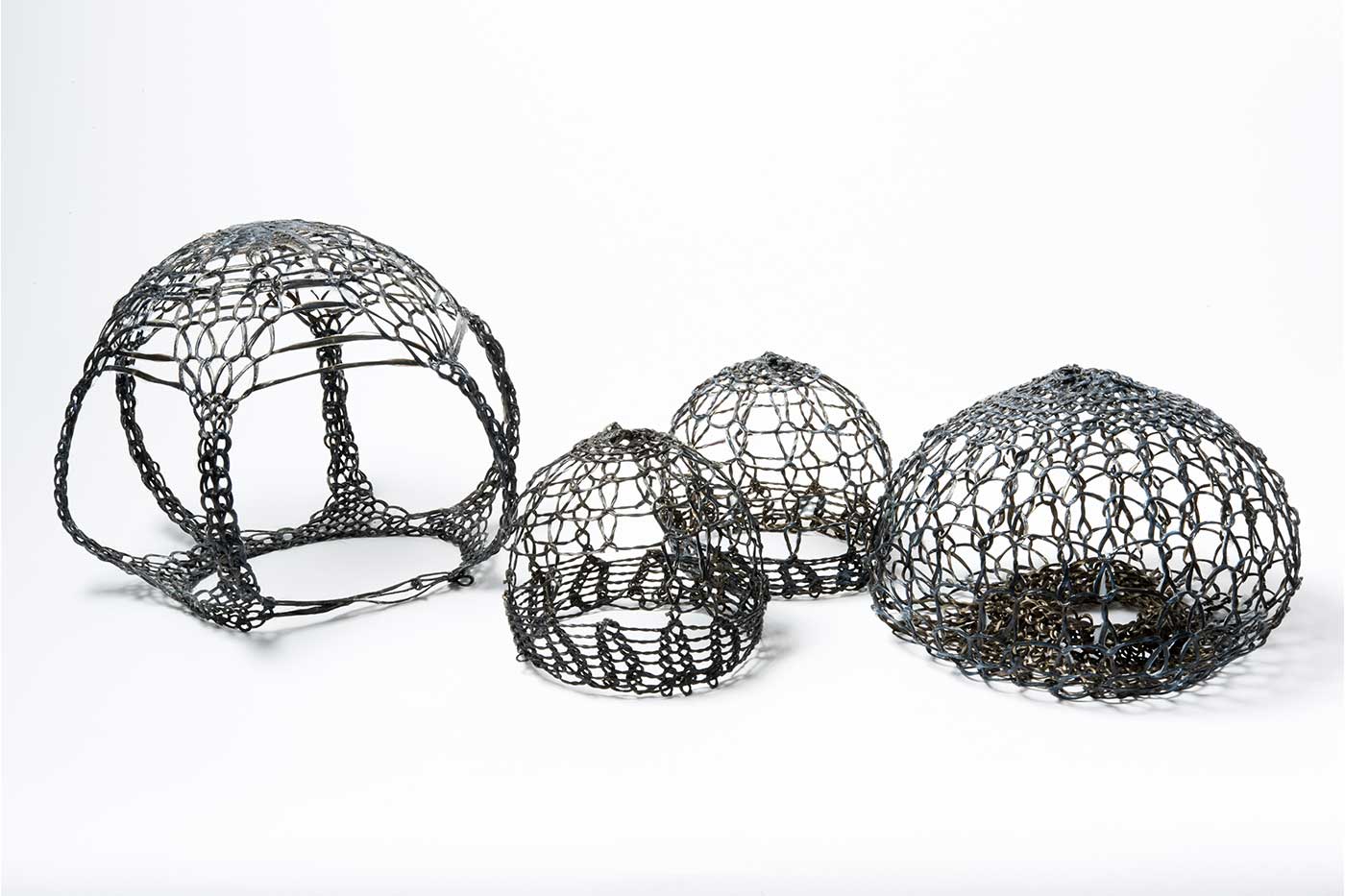
SteinWeich – Vaulted Stone, 2017
Abigail Wheeler, Boram Park, Rute Chaves
The project explores the structural potential of basalt fibers for lightweight construction. Using the traditional method of textile manufacturing models for free-standing structures knitted with resin reinforced basalt filaments were created. The loops form an organic structure while simultaneously exhibiting a delicate but stable form. The variation in loop size and number creates a gradient which when knit at larger proportions, one could use as openings to the space or as a shaded canopy.
Alle Rechte vorbehalten Agata Kycia

Alle Rechte vorbehalten Agata Kycia
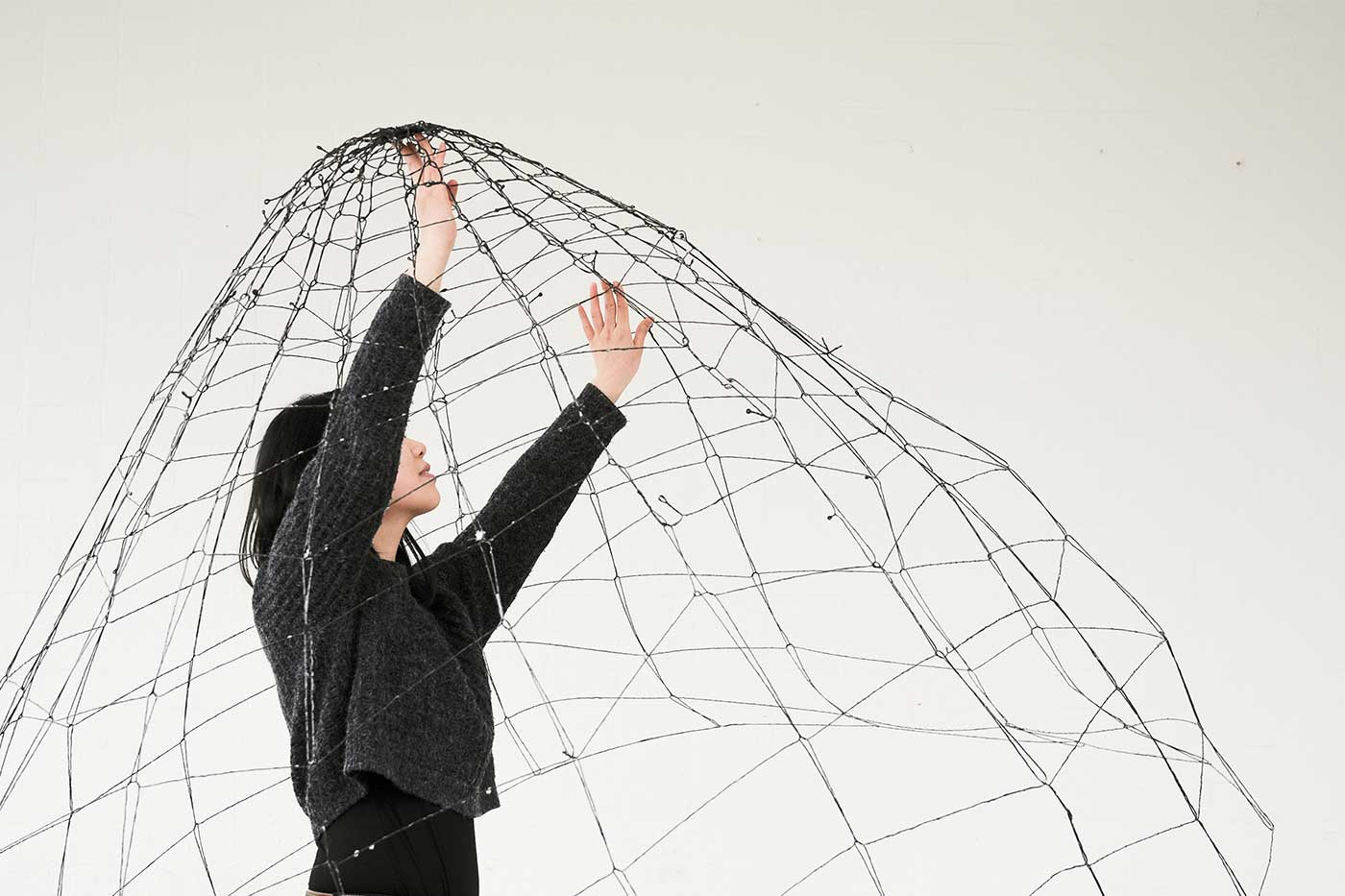
Alle Rechte vorbehalten Agata Kycia
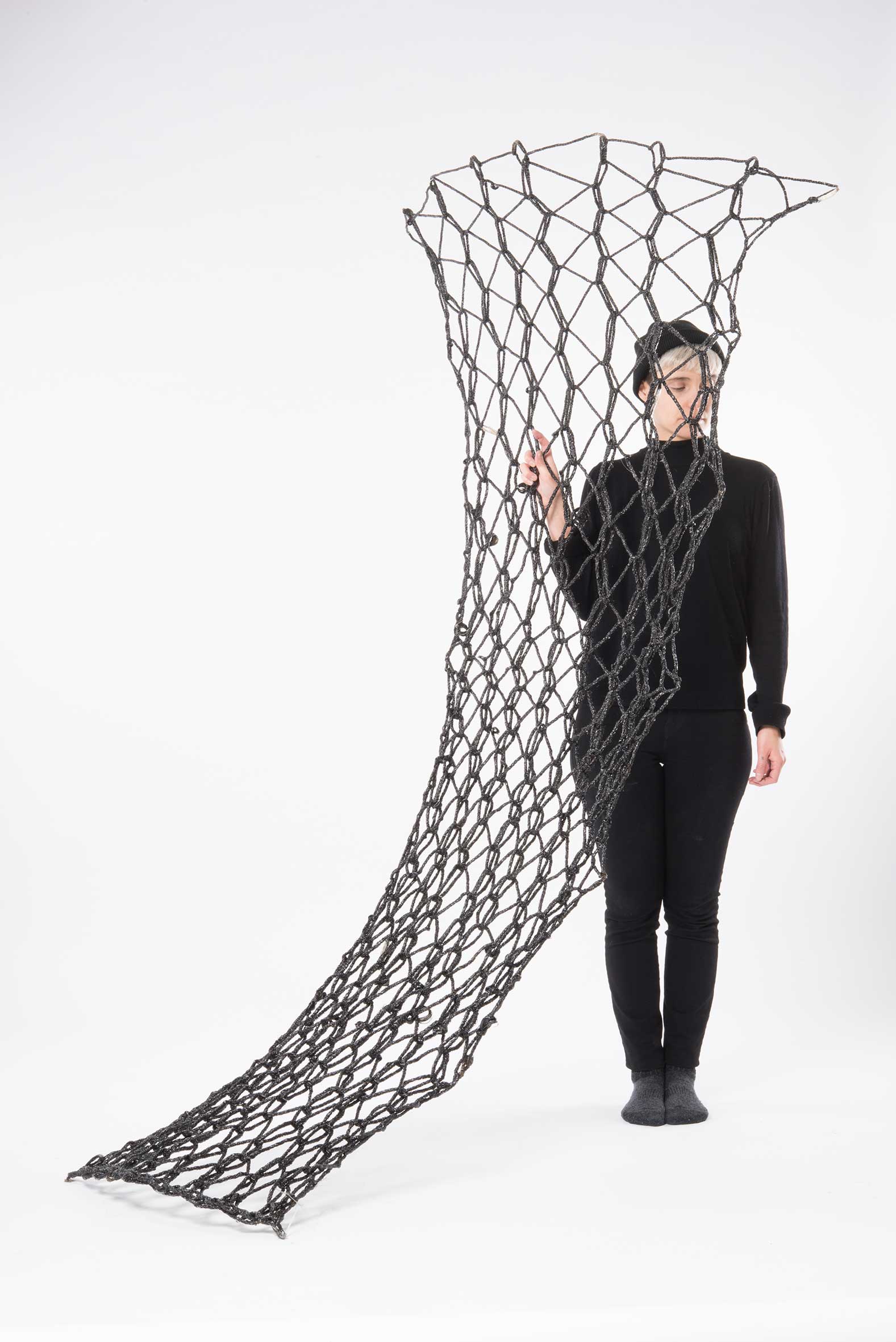
Alle Rechte vorbehalten Agata Kycia
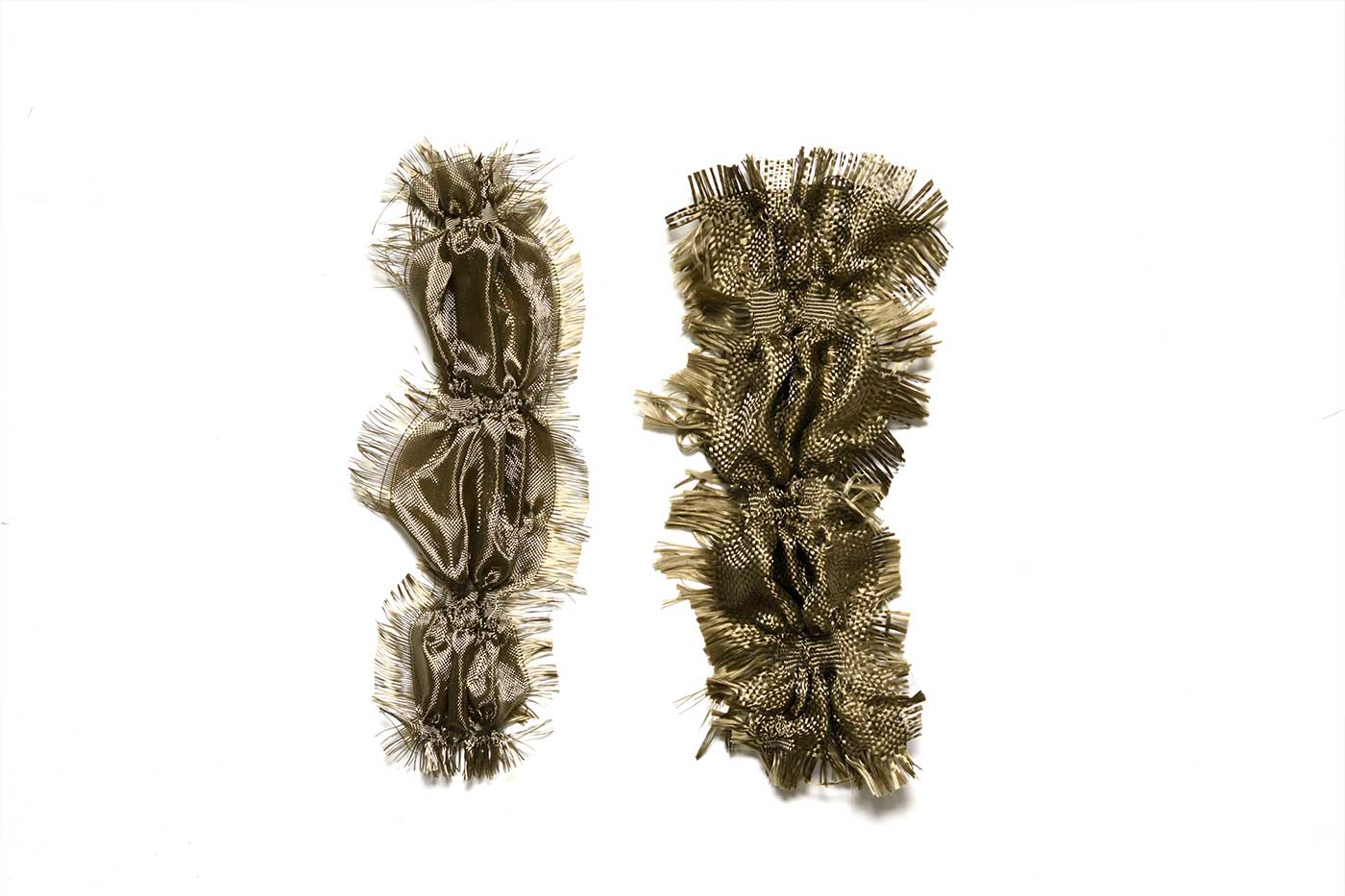
SteinWeich – Deformierung, 2017
Lena Ganswindt, Liina Leo
Vibrant textile structures are developed by manipulation of technical fabrics. Curtains or room dividers of various transparencies and three-dimensional plasticity are created through pulling individual threads, which keep its shape solely due to the material friction. The textile object reacts to light conditions due to the material and the open or closed surface composition.
Exhibition: Zentrum für Leichtbau, STFI, Chemnitz, ab 05 / 2017
Alle Rechte vorbehalten Agata Kycia
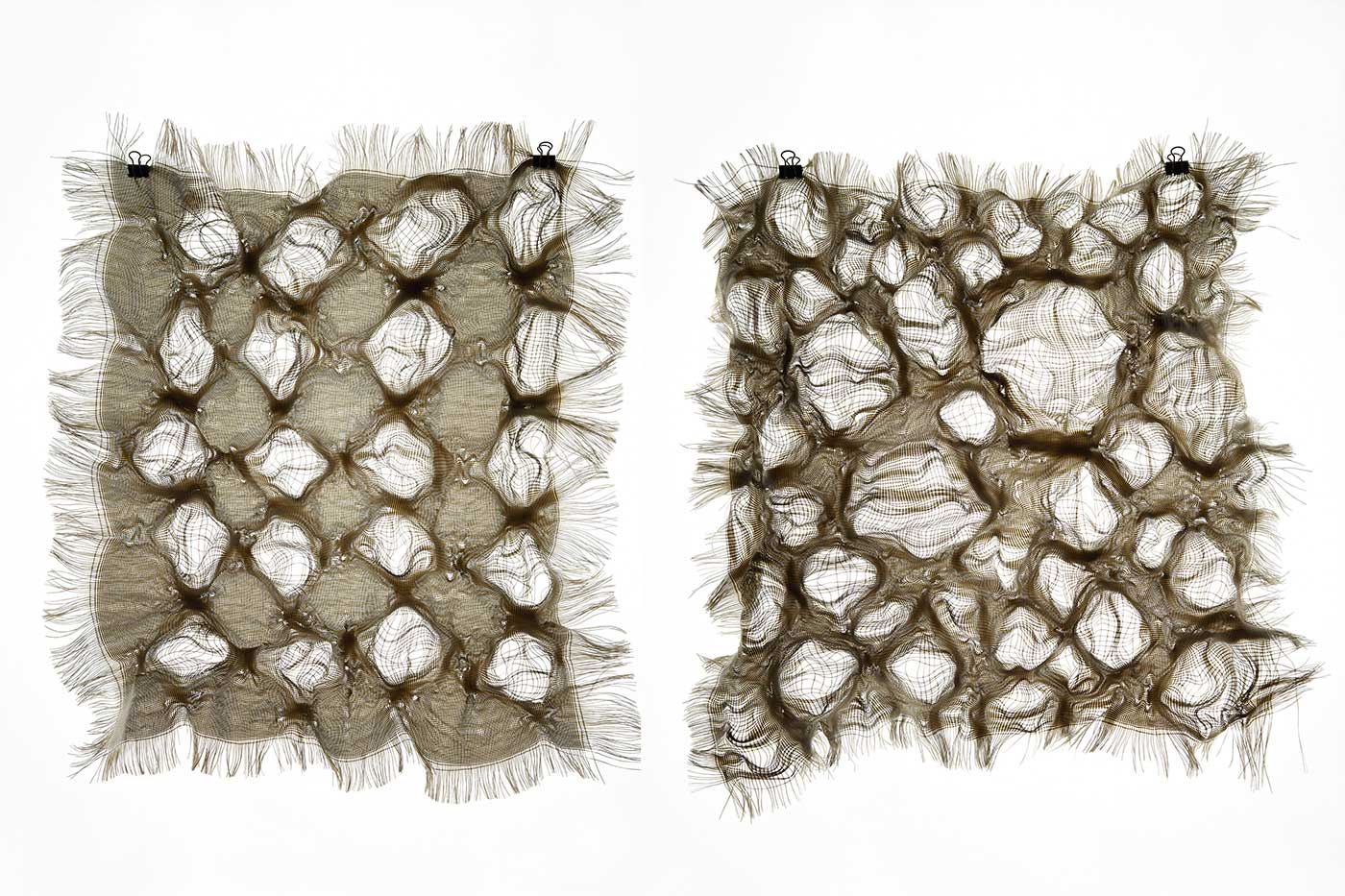
Alle Rechte vorbehalten Agata Kycia

Alle Rechte vorbehalten Agata Kycia
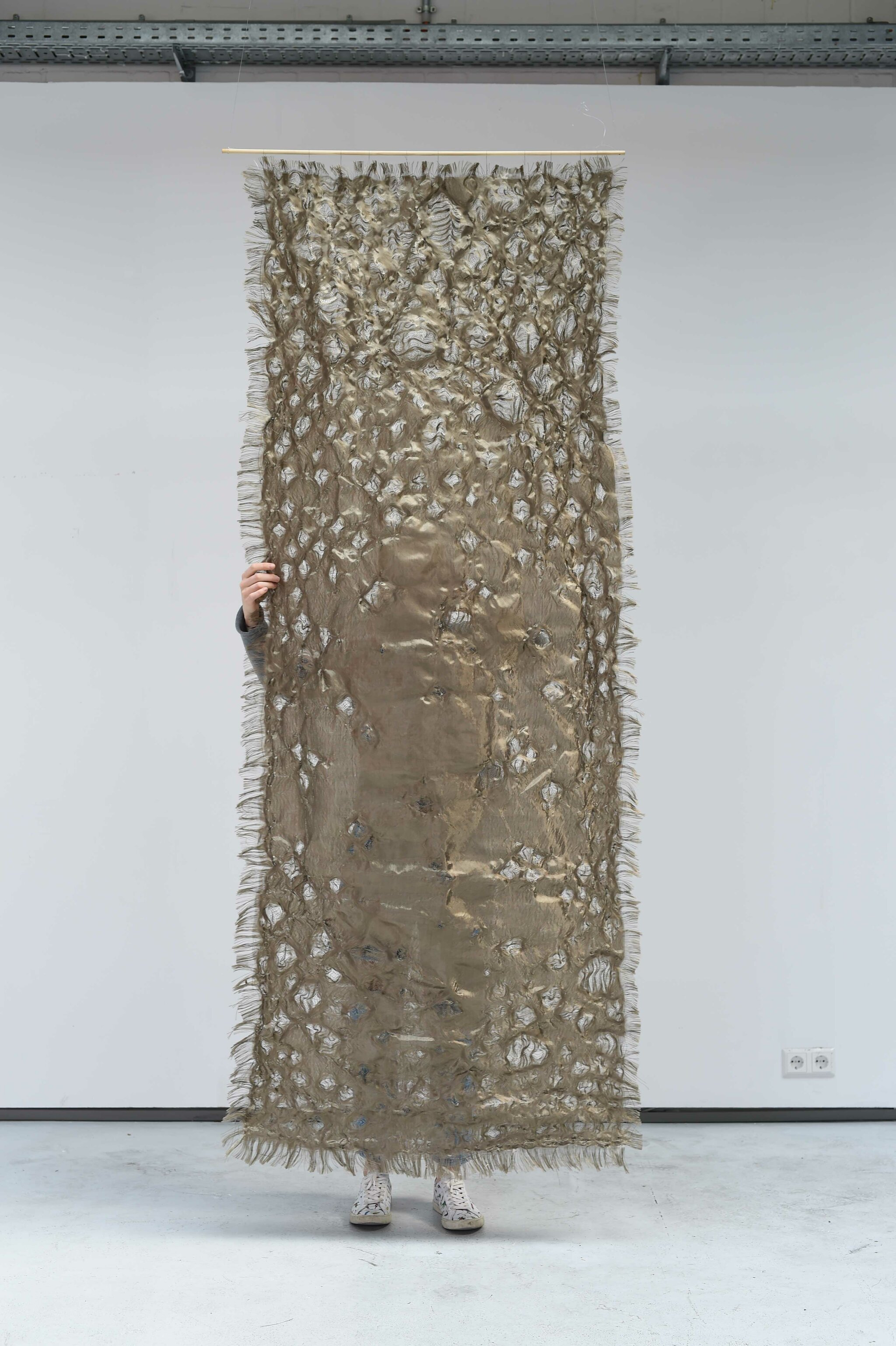
Alle Rechte vorbehalten Agata Kycia
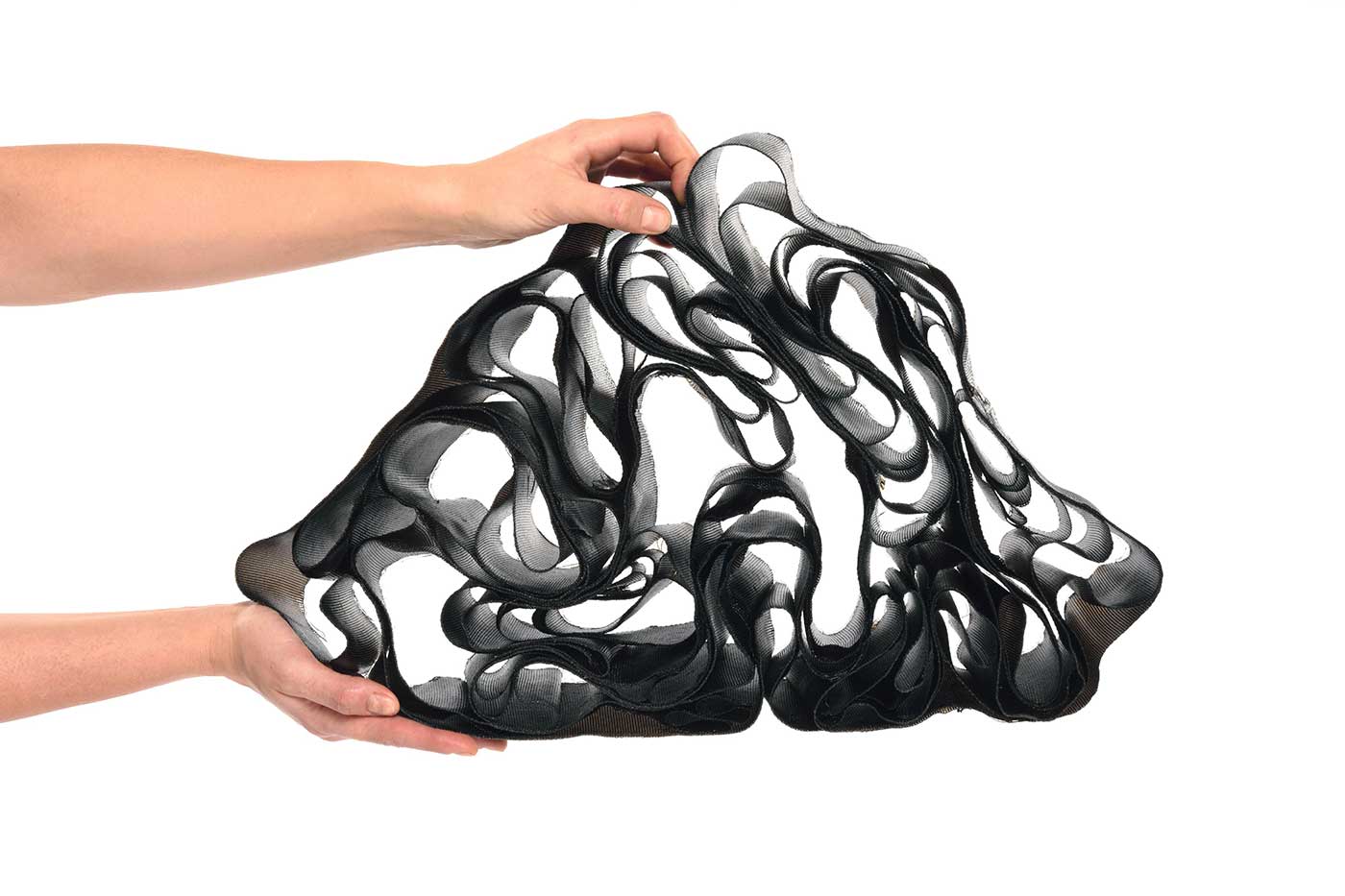
Alle Rechte vorbehalten Agata Kycia
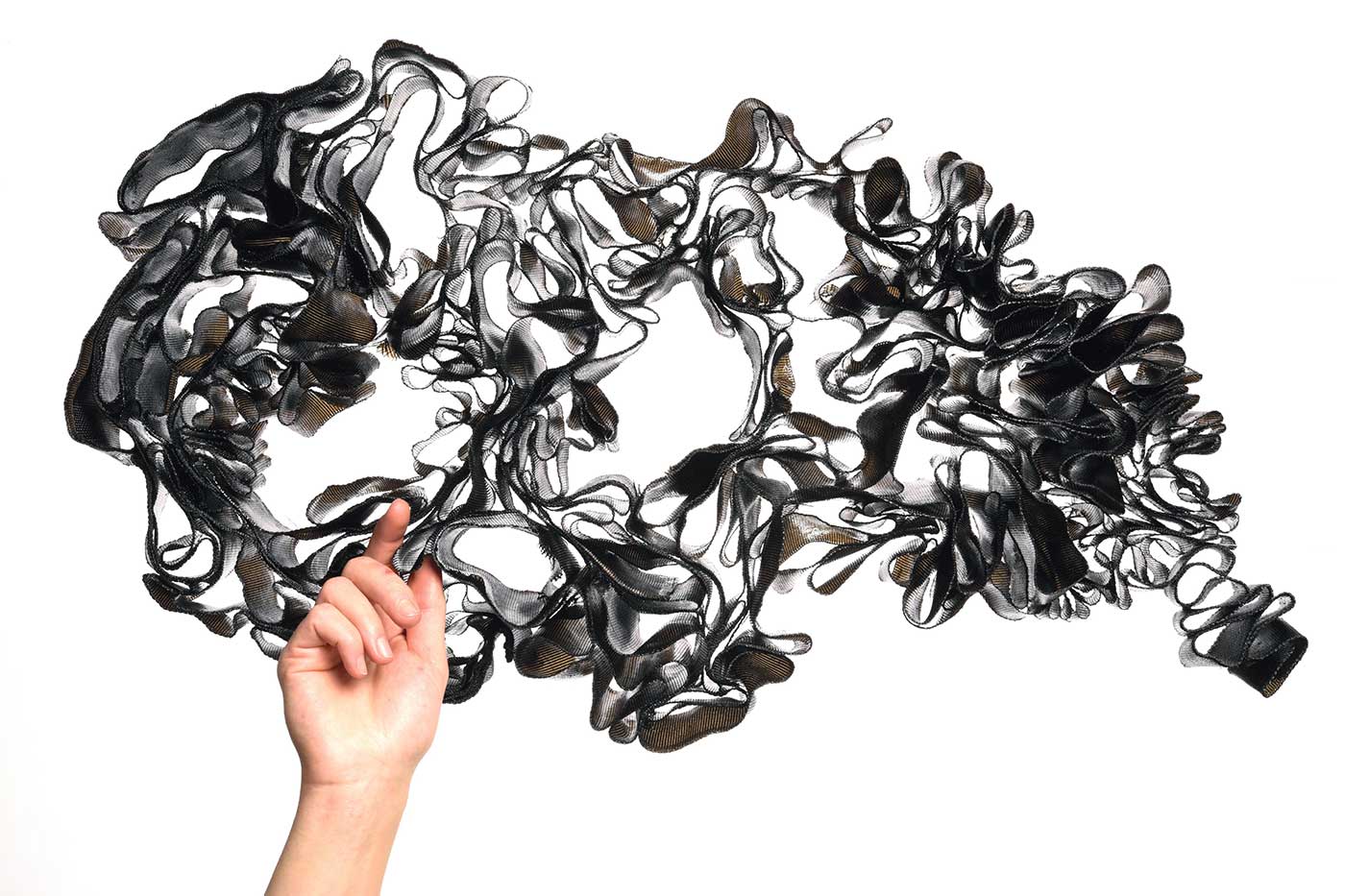
Alle Rechte vorbehalten Agata Kycia
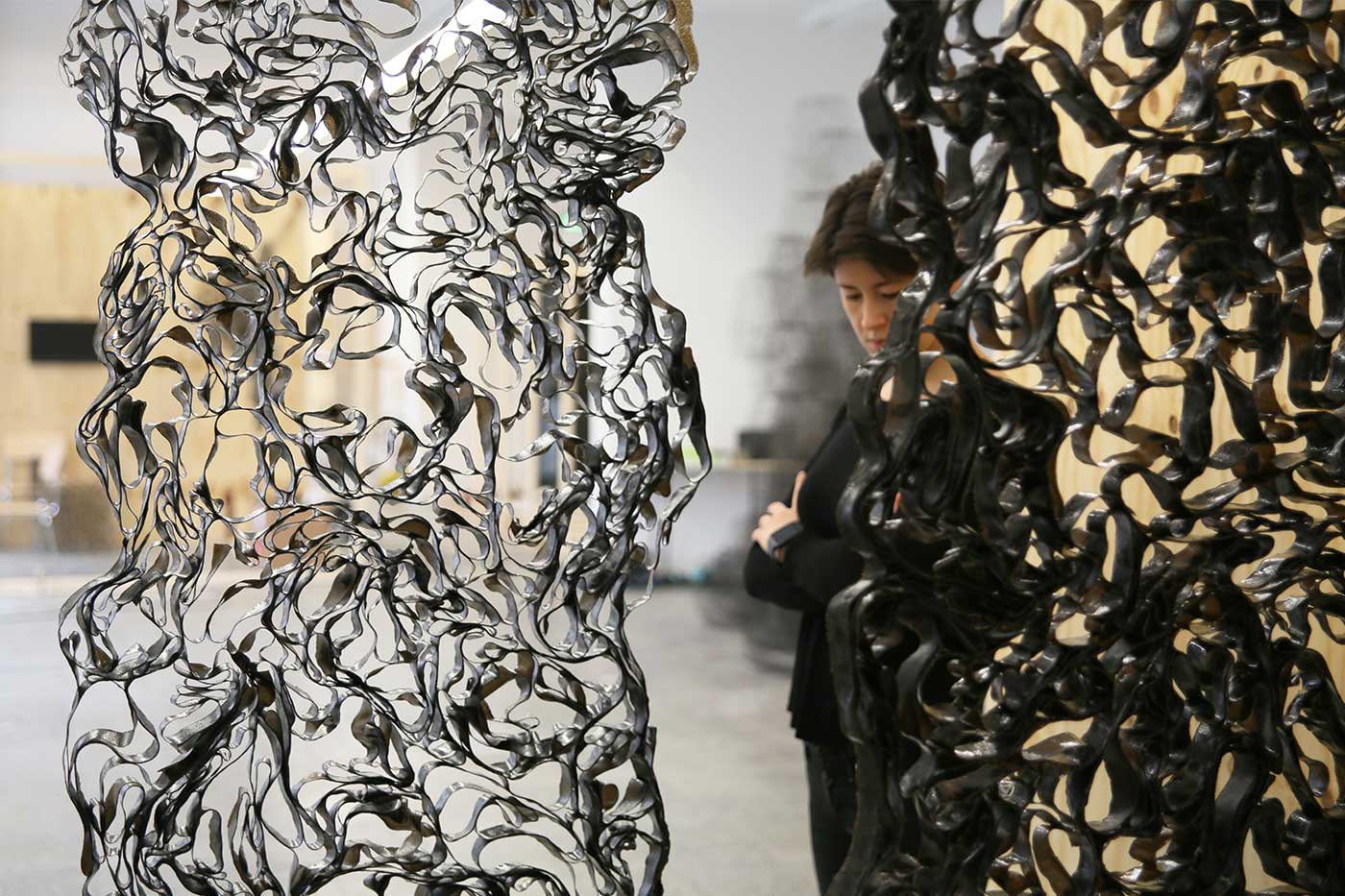
Alle Rechte vorbehalten Agata Kycia
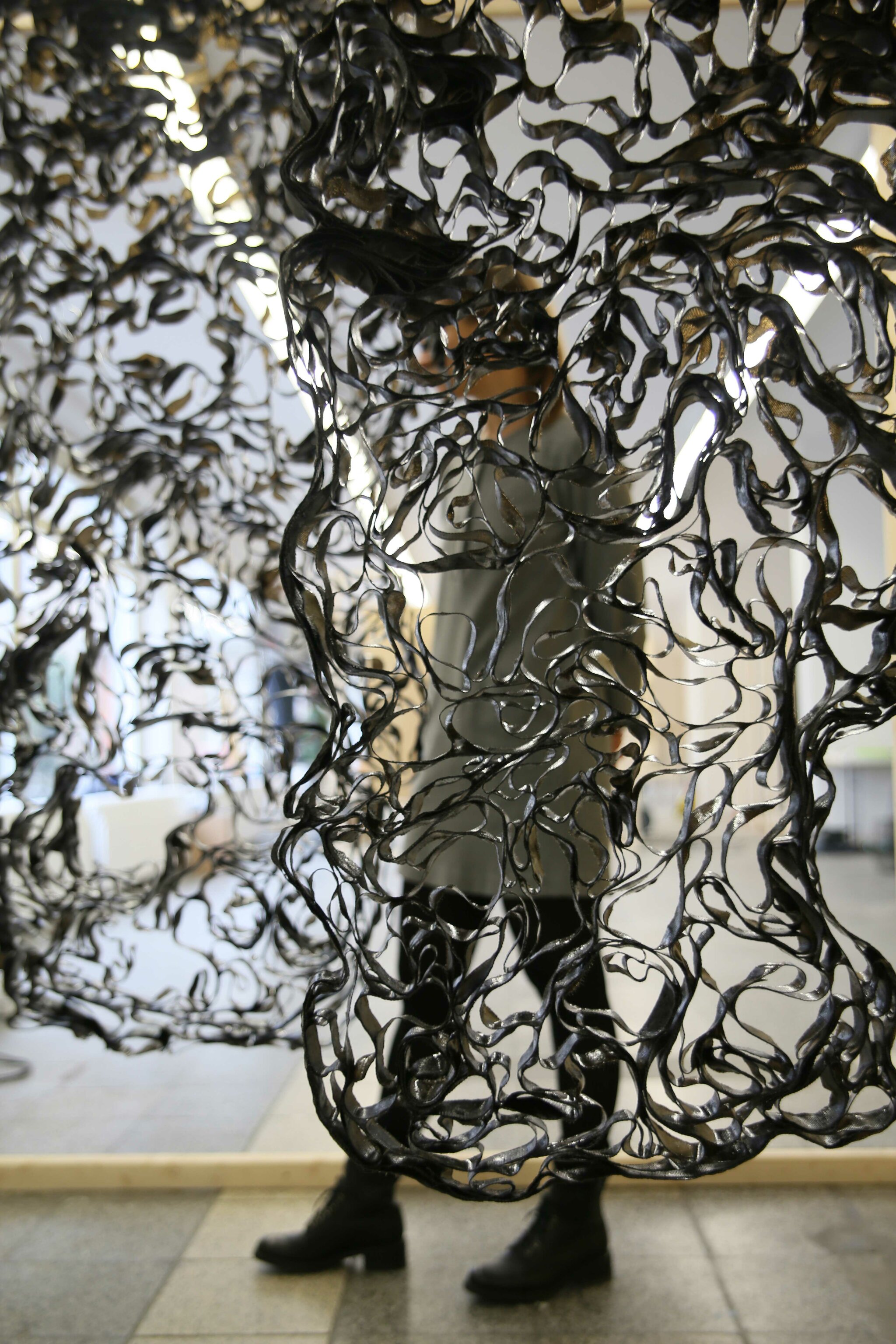
Alle Rechte vorbehalten Agata Kycia